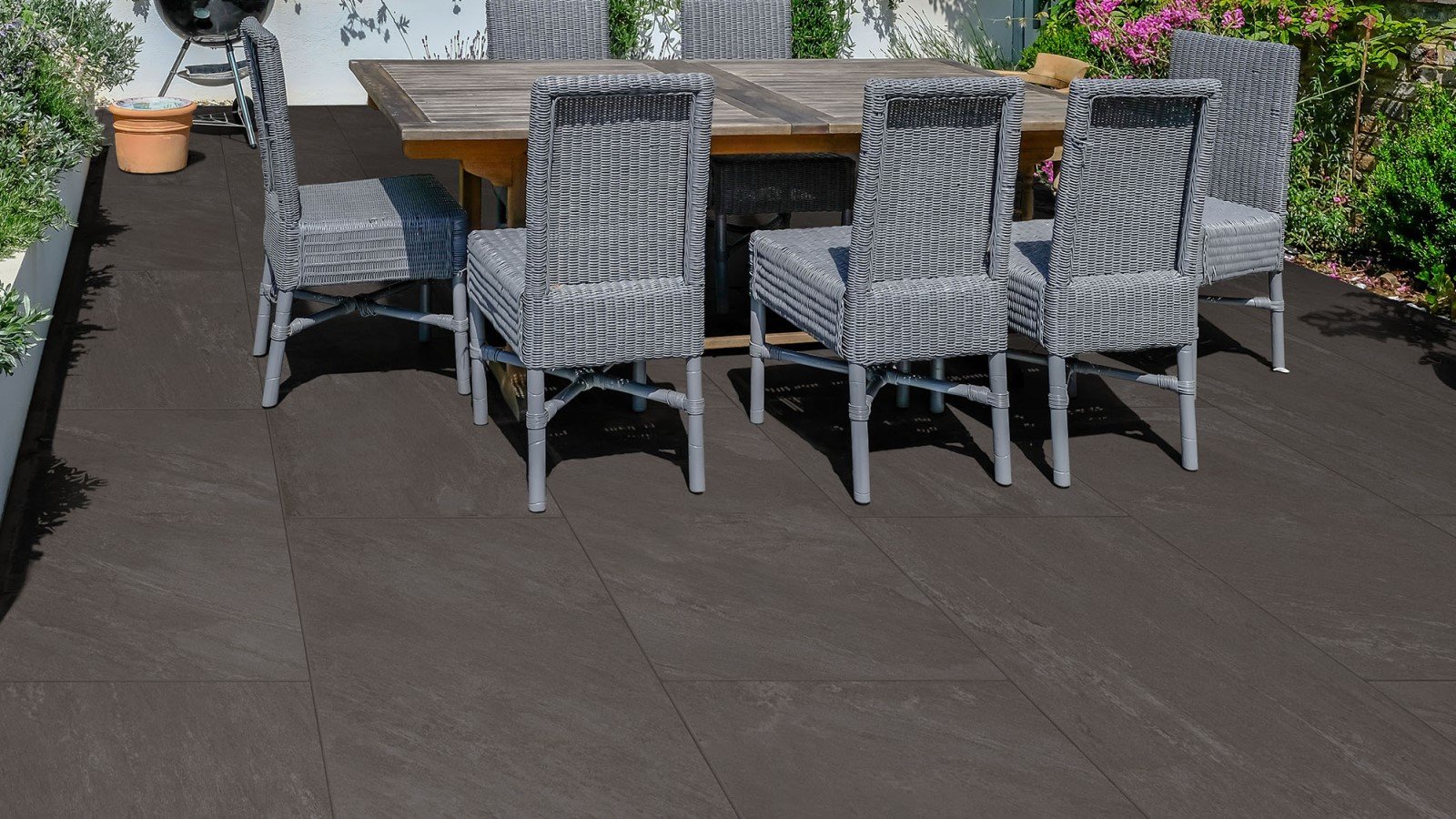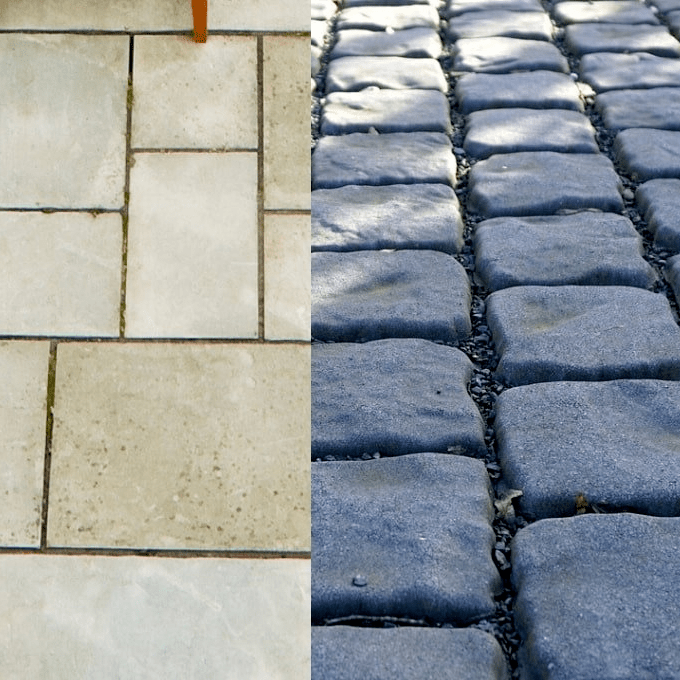
Thinking about doing some DIY paving but haven’t yet decided which paving materials are right for the job? You’ve come to the right place.
In this article, we guide you through the difference between carpet stones and paving slabs so you can be certain you’re spending your money wisely.
Firstly, which is easier to lay?
Where paving slabs are laid individually on a per-piece basis, carpet stones come readily fitted together in rows on a single plastic mat (or a ‘carpet’). The so-called ‘cobbles’ are strung together and attached by a thin plastic wire that can easily be cut to shape.
Viewed in this way, carpet stones are quicker to lay than paving slabs, but are they easier? Surprisingly, only slightly.
You still need to excavate your paving area, create a sub-base with either MOT or ballast, and build a laying bed – just like you do when laying paving slabs. (Carpet stones may be set to a flexible mat, but they still move around without a good foundation.) The only difference between carpet stones and paving slabs, in this case, is the act of laying the paving material. The prep work, however, is all the same.
Which is more expensive?
So, we know that carpet stones are quicker to lay than paving slabs – and, for this convenience, there is a cost.
At their cheapest, carpet stones come in at around £40-£45 per m². Compare this to economic paving slabs which are available between £10-£15 per m²; it’s quite the price difference.
However, much like patio vs decking, the price gap closes when we compare the top ranges of the two. For example, premium carpet stones cost around £45-£50 per m², while high-end paving slabs are around £60 per m². In this case, premium carpet stones are cheaper than paving slabs.
So, what’s the bottom line? It depends what you value more: if convenience is your priority, paying a few extra ££ per m2 for carpet stones will be a good trade-off. However, if you are trying to cut your budget, a good quality, medium-priced paving slab is your best bet.
Which looks better?
As ever, taste hinges on personal preference. For example, if you’re going for a traditional, rustic look then carpet stones are the obvious choice. This is because the pre-set ‘cobbles’ are far smaller than slabs, and they are all uniquely shaped along their rows, creating an organic, homely look.
On the other hand, as carpet stones are pre-set and fitted to a mat, there are only a few style options to choose from. Plus, if you start your paving with one style of carpet stone, you are limited to that one type – and that one shape - for the rest of your paving project.
Whereas with paving slabs, variety thrives. There are options to mix and match packs, switch up slab sizes, play around with patterns and introduce unique points of interest, like natural veining and colour variations.
And let’s not forget the great range of slab styles. From riven sandstone to smooth, modern porcelain and manmade heavy-duty varieties, there is a seemingly endless list of paving slab styles at your DIY disposal.
Which is more versatile?
Both carpet stones and paving slabs are traditionally used in garden areas, like patios and pathways. As for driveways, the cobble-effect styled carpet stones are just as effective as durable block paving. However, standard paving slabs should be avoided for driveways.
As for which is the best ‘all-rounder’, that’s a tough one. That’s because, while there are more paving slab varieties to choose from (along with the option to cut them to shape), carpet stones are easy to lay in awkward and intricate shapes. All you need to do is cut the wire and manoeuvre the mat to fit your area. Of all the benefits, this is perhaps the top reason for people choosing carpet stones for their garden.
Feel like you’ve made your decision? Browse our range of carpet stones and paving slabs on the Simply Paving website or for help on selecting your favourite, call us on 0800 032 6306 or start a live chat.










































